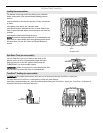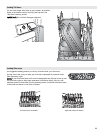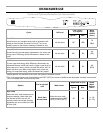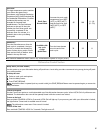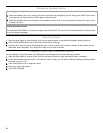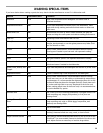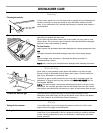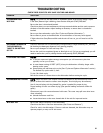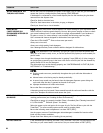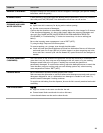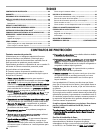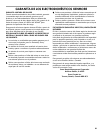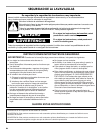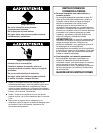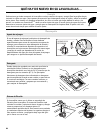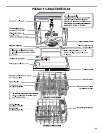
22
WATER REMAINS IN THE
TUB/WILL NOT DRAIN
Be sure the cycle has completed (the green or blue light is on). If it has not, you will need to
resume the cycle by closing the door and pressing START/RESUME.
If dishwasher is connected to a food waste disposer, be sure the knockout plug has been
removed from the disposer inlet.
Check for kinks in the drain hose.
Check for food obstructions in the drain, air-gap, or disposer.
Check your house fuse or circuit breaker.
HARD WATER
(WHITE RESIDUE ON
DISHWASHER INTERIOR OR
GLASSWARE)
NOTE: Extremely hard water mineral deposits can cause damage to your dishwasher and
make it difficult to achieve good cleaning. You may bring water samples to Sears to check
your water hardness level. A water softener is strongly recommended if your hardness is
15 grains or more. If a water softener is not installed, the following steps may help:
Use a commercial cleaner designed for dishwashers once per month.
Clean the ULTRA WASH
®
filters at least once per month.
Always use a rinse aid.
Always use a high-quality, fresh detergent.
Use a detergent booster/water softener additive designed for dishwashers.
ODORS NOTE: If the dishwasher is not used daily, you can run a rinse cycle with the partial load
daily until a full load is ready to run, or use the Top Rack Only option (on some models) for
partial loads.
Run a vinegar rinse through the dishwasher by putting 2 cups (500 mL) of white vinegar in
an upright glass measuring cup in the lower rack. Run a normal cycle with the Heated Dry
option turned off. Do not use detergent.
The dishwasher may not be draining properly, see “WATER REMAINS IN THE TUB/WILL
NOT DRAIN” in “Troubleshooting.”
NOISY NOTES:
■ Surging sounds can occur periodically throughout the cycle while the dishwasher is
draining.
■ Normal water valve hissing may be heard periodically.
■ A normal snap sound may be heard when the detergent dispenser opens during the
cycle and when the door is opened at the end of the cycle.
■ Improper installation will affect noise levels.
Be sure the filters are properly installed.
A thumping sound may be heard if items extend beyond the racks and interfere with the
wash arms. Readjust the dishware and resume the cycle.
FOOD SOILS REMAIN
ON DISHES
Be sure the dishwasher is loaded correctly. Improper loading can greatly decrease the
washing performance (see “Loading for Best Performance”).
Check filter to ensure it is properly installed. Clean it if needed. (See “Cleaning Instructions”
in “ULTRA WASH
®
Filtration System” for details.)
Select the proper cycle and option for the type of soils. The Pots & Pans cycle with the
T
URBOZONE
TM
(on some models) option can be used for tougher loads.
Be sure the incoming water temperature is at least 120°F (49ºC).
Use the proper amount of fresh detergent. More detergent is needed for heavier-soiled
loads and hard water conditions.
Scrape food from dishes prior to loading (do not prerinse).
DID NOT SANITIZE If the sanitized light is blinking, the load is
NOT
sanitized. The cycle was interrupted in the
final rinse, or your water heater is set too low. Set your water heater to 120ºF (49ºC).
PROBLEM SOLUTION
H
E
H
E



